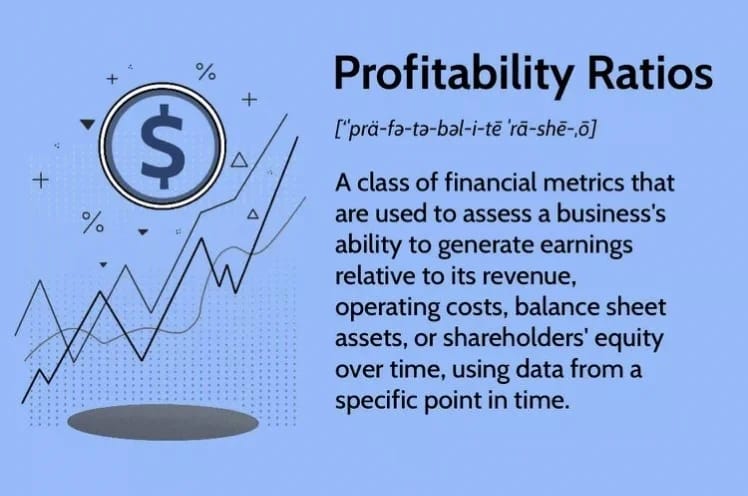
What Are Profitability Ratios?
A family of financial indicators known as profitability ratios is used to evaluate a company’s potential to create profits over time in relation to its revenue, operational expenses, balance sheet assets, or shareholders’ equity using information from a particular point in time. These indicators are some of the most widely used in financial analysis.
Efficiency ratios, which take into account how well a company uses its resources internally to generate income, can be used in conjunction with profitability ratios. (as opposed to after-cost profits).
KEY TAKEAWAYS
- A company’s capacity to generate profits from sales or activities, balance sheet assets, or shareholders’ equity is evaluated by profitability ratios.
- Higher ratios, which show success in turning revenue to profit, are frequently preferable than lower ratios.
- Margin and return ratios are examples of profitability ratios.
What Can Profitability Ratios Tell You?
In general, larger profitability ratios might indicate a company’s strengths and advantages, such as the capacity to charge more (or less) for items and to keep expenses down.
The most helpful comparisons for a company’s profitability ratios are those with similar businesses, the company’s past performance, or industry averages.
Margin Ratios
The difference between profit and costs grows while costs are low and contracts when more costs (such as taxes, operational expenditures, and cost of goods sold (COGS)) are taken into account.
Gross Margin
The difference between sales income and the previously mentioned COGS, or costs of goods sold, is the gross profit.
It can mean the business has a significant competitive edge.
Therefore, comparing a retailer’s fourth-quarter profit margin to its (or its peers’) fourth-quarter profit margin from the prior year would be the most insightful and helpful.
Operating Margin
How effectively a business handles its operations can be shown by operating margin. That can reveal how well management minimises expenses and increases profitability.
It most likely has lower prices than its rivals. Additionally, it is better equipped to withstand the effects of an economy in decline.
Pretax Margin
The pretax margin displays a company’s profitability after deducting all costs, except taxes and non-operating costs like interest and inventory write-offs.
When compared to its competitors, a company with a large pretax profit margin can be said to be financially sound and capable of setting the most reasonable prices for its goods and/or services.
Net Profit Margin
The net profit margin is used as a proxy for a company’s overall financial health. It can show whether management of the company is making a sufficient profit from sales and keeping all costs in check.
The similar one-off transactions won’t happen at other companies. Because of this, it’s a good idea to include other ratios in addition to net profit margin, like gross margin and operating margin.
As a peer comparison tool, it is limited by the fact that because it takes into account all costs, it can show one-time costs or the sale of assets that increased profits for a specific time frame.
What Are the Most Important Profitability Ratios?
Gross margin, operating margin, and net profit margin are frequently seen as the profitability measures that are most significant for a corporation.
Why Are Profitability Ratios Significant?
They are important because they can show a company’s capacity to generate consistent profits (after deducting expenditures) and how effectively it manages investments to generate returns for shareholders. They may demonstrate the management’s success in achieving these two objectives as well as the overall monetary health of the business.
How Is Business Profitability Best Measured?
Two often used metrics for gauging firm success are the gross profit margin and net profit margin ratios. The net profit margin measures the profit a company makes as a percentage of its total sales after all costs have been deducted. A higher profit than the cost of products sold is referred to as a higher gross profit margin.
